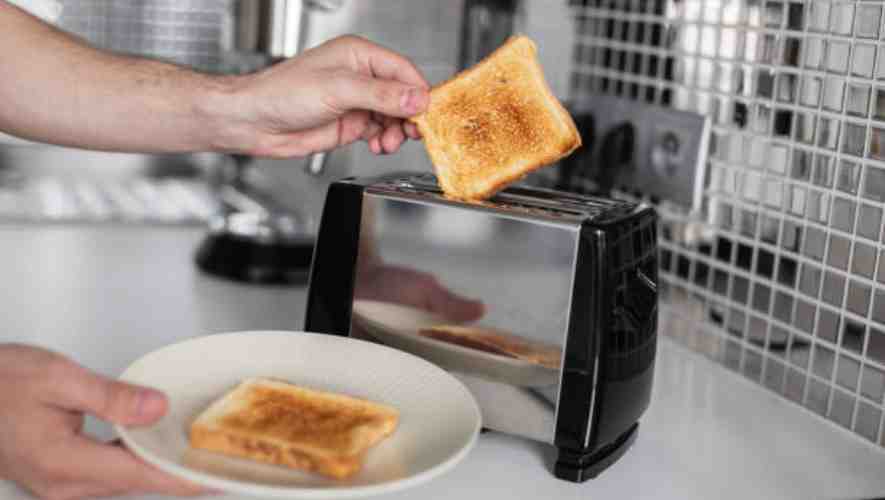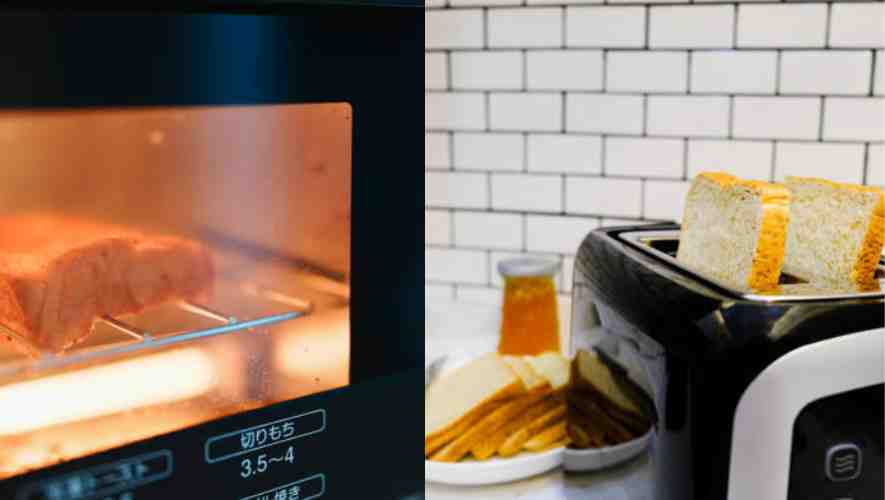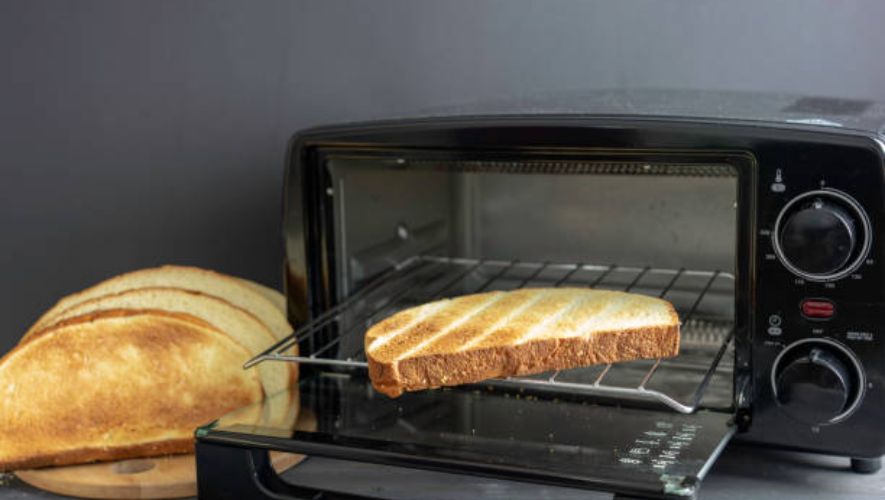When it comes to heating up your meals, the battle between a toaster oven and a microwave is a common dilemma in many kitchens. Both appliances have their own advantages for warming meals, but which is the better option for your countertop? Toaster ovens use a coil and often convection technology to cook food, giving them an edge in browning and crisping your dishes. On the other hand, a microwave oven is the go-to for many because it significantly cuts down cooking time and is excellent for a quick reheat.
A toaster oven offers better results for baking and broiling, providing even cooking and browning, which a microwave cannot match. However, microwaves excel in speed and convenience, heating food much faster than toaster ovens. The choice depends on your specific cooking needs.
Understanding the differences between toaster oven vs microwave can help decide what’s best suited for your cooking habits. If you’re trying to choose between a toaster oven or a microwave, consider what you mostly do in the kitchen. Do you prefer to cook the food or just heat food up? Toaster ovens and microwaves each excel in different scenarios. Toaster ovens cook food evenly and can add a desirable crispness to your leftovers, enhancing texture and flavor. However, if speed and convenience are your priorities, a microwave might be the way to go, allowing you to reheat meals quickly and efficiently.
Microwave or Toaster Oven: Which One Cooks Leftovers Better?

When you’re standing in front of your fridge, leftovers in hand, the decision between using a microwave or a toaster oven might seem trivial, but each appliance has its strengths and weaknesses when it comes to reheating food. Here’s a down-to-earth look at which gadget might be your best bet for reviving last night’s dinner.
Capacity and Size
Toaster ovens come in a range of sizes, but a typical unit might offer about 0.5 to 1 cubic feet of space, while microwaves can range from compact models at around 0.7 cubic feet to full-size versions up to 2 cubic feet. This size difference means if you’re heating up a large plate of leftovers, a full-size microwave could handle this better due to its larger interior. Toaster ovens, although smaller, often feature a glass door that makes it easy to monitor your food as it heats.
Reheating Performance
Microwaves work by using electromagnetic waves to excite water molecules in your food, rapidly heating it from the inside out. This is ideal for quick reheating, especially for soups and beverages that benefit from even heat distribution. Toaster ovens use traditional heating elements and often include convection cooking, which can help to reheat leftovers more evenly than a microwave, especially for items that benefit from a crisper texture or need to caramelize, such as pizzas or roasted vegetables.
Specialty Features and Cook Settings
Many microwaves now come with specialized cook settings that tailor the power level and cooking time for different types of foods, which can be particularly handy for reheating common items like soups or casseroles without overcooking them. On the other hand, toaster ovens often have settings that allow for baking, toasting, and even broiling, which can add a desirable crunch and browning to your leftovers that microwaves simply can’t match.
Considerations for Installation
Space might be a deciding factor in your choice. Over-the-range microwaves can save precious counter space, fitting neatly above your stove at around 20 inches wide by about 10 inches high. Toaster ovens need counter space and clearance around them due to the heat they emit, which might be a consideration in smaller kitchens.
Deciding Between a Toaster Oven and a Microwave: What’s the Best Buy?

When you’re setting up your kitchen or looking to replace an aging appliance, deciding between a toaster oven and a microwave can feel like a real toss-up. Each appliance has its own set of strengths, suited to different cooking and heating needs. Let’s break it down to help you figure out which might be the best buy for your kitchen.
Key Differences in Functionality
Toaster ovens are versatile appliances that excel at a variety of cooking methods, including baking, toasting, and broiling. They’re especially good for foods that benefit from a crispy exterior, like breads and pizzas. You can toast multiple slices of bread at once, with most units handling anywhere from four to six slices, or even more. This makes them great for preparing meals that require longer cooking times but need a gratifying finish.
Microwaves, on the other hand, specialize in heating and reheating food quickly and efficiently. They use electromagnetic waves to excite water molecules in food, speeding up the heating process significantly. This makes microwaves ideal for tasks like reheating leftovers, heating water for tea, or preparing microwave-specific meals. They are particularly handy when you need to reheat food or cook items where the texture is not as important.
Considerations for Space and Size
Space is a major consideration when choosing between these two appliances. Microwaves range from compact models, typically about 10 inches deep, to larger over-the-range models that can get quite bulky. The correct size to fit your kitchen depends largely on your available counter or over-the-range space. Toaster ovens, while generally smaller than conventional ovens, still require enough countertop space and proper clearance to operate safely due to their external heating elements.
Energy Efficiency and Cost
In terms of energy use, toaster ovens are often seen as more efficient than traditional ovens because they heat up smaller spaces and generally do so more quickly. However, compared to microwaves, which can cook food in a fraction of the time, toaster ovens might lead to slightly higher energy use for simple tasks like reheating.
Cost-wise, both appliances range from about $30 for basic models to over $300 for high-end versions with multiple features. Microwaves typically start a bit cheaper for the most basic models but can quickly escalate in price for models with more advanced features or larger capacities.
Making the Right Choice
The best buy between a toaster oven and a microwave largely depends on your cooking habits and kitchen layout. If you often find yourself making meals that benefit from a crispy, browned exterior or require precise cooking methods, a toaster oven is likely more up your alley. It’s also the better choice if you frequently bake or broil small batches of food.
Conversely, if your primary need is to quickly heat or reheat meals and drinks, and space is at a premium in your kitchen, a microwave may be the more practical choice. It’s also worth considering if you live a fast-paced lifestyle where convenience and speed are paramount.
Ultimately, choosing between a toaster oven and a microwave doesn’t have to be an either/or decision. Many people find that owning both appliances allows them to cover all their cooking and reheating needs efficiently.
Conclusion
In conclusion, when deciding between a toaster oven and a microwave, it’s essential to consider how each device fits into your cooking style and kitchen space. Microwaves offer the advantage of speed and convenience, particularly adept at tasks like heating water or using electromagnetic waves to quickly reheat food. They are ideal for those who need a quick turnaround in the kitchen and can efficiently handle everything from defrosting to making popcorn.
On the other hand, toaster ovens, whether you opt for a four-slice or six-slice model, excel in tasks that benefit from direct heating produced by coils. These appliances are perfect for those who appreciate the crispness and browning that a microwave simply cannot match. Additionally, features like a crumb catcher and removable glass trays make maintenance straightforward.
It’s important to ensure that whatever model you choose, you allow enough clearance as specified by building codes, typically about 16 inches to 24 inches above the appliance, to ensure safety and efficiency. This minimum spacing helps in optimizing your kitchen’s airflow and heat management.
Whether you decide on a microwave, a toaster oven, or find that having both best meets your culinary needs, each appliance offers unique benefits that can enhance your cooking experience. From quick recipes to kitchen hacks, understanding the capabilities of your microwave or toaster oven can truly revolutionize how you prepare meals, allowing for a blend of speed, convenience, and quality in your daily food preparation.
Frequently Asked Questions (Is a Toaster Oven Better Than a Microwave)
What is the disadvantage of oven toaster?
One disadvantage of an oven toaster is its limited interior space, which restricts the size of dishes that can be cooked, making it less suitable for preparing meals for large groups or accommodating larger food items compared to a conventional oven.
Is it better to microwave or toaster oven pizza?
Microwaving pizza is faster and more convenient, but using a toaster oven can provide a crisper crust and more evenly melted cheese. For the best texture and flavor, the toaster oven is generally preferred, especially for reheating leftovers or cooking frozen pizzas.
Does toaster oven use a lot of electricity than microwave?
No, toaster ovens generally use more electricity than microwaves. While energy usage varies by model, microwaves typically consume less power because they heat food more efficiently and operate for shorter periods. Toaster ovens use radiant heat and often run longer to cook food.
Can oven toaster be used as microwave?
No, an oven toaster cannot be used as a microwave. While both are kitchen appliances for heating food, they operate differently. A toaster oven uses radiant heat for baking or toasting, while a microwave uses electromagnetic waves to heat food quickly and uniformly.

